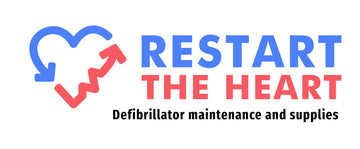Benefits & Risks of an AED in the Office or Workplace
An Automated External Defibrillator (AED) is a portable medical device that can save a life by delivering an electric shock to the heart in case of sudden cardiac arrest (SCA). SCA is a leading cause of death worldwide, claiming millions of lives yearly. As most people spend a significant amount of their time at work, it is essential to consider having an AED in the office or workplace.
Here are the benefits and risks of having an AED in the workplace and whether it is worth investing in.
The Benefits of Having an AED in the Workplace
1. Quick Response Time
SCA can strike without warning, and seconds count in saving a life. Having an AED in the workplace can significantly reduce response time and increase the chances of survival. AEDs are designed to be used by anyone, even those without medical training. They provide step-by-step audio and visual instructions on using them, making them easy to operate in an emergency.
2. Saves Lives
The primary benefit of having an AED in the workplace is that it can save lives. SCA is a leading cause of death, and early defibrillation is the most effective treatment. According to the American Heart Association, the chances of survival decrease by 7-10% for every minute that passes without defibrillation. Having an AED in the workplace can help to bridge the gap between the time of the incident and the arrival of emergency medical services.
3. Cost-Effective
Investing in an AED for the workplace is cost-effective in the long run. According to a study by the American Heart Association, the cost of providing CPR and defibrillation services in the workplace is less than $1 per employee per month. This is a small price to pay for potentially saving a life.
The Risks of Having an AED in the Workplace
1. Legal Liability
One of the risks of having an AED in the workplace is the potential legal liability. If an AED is not maintained correctly or misused, it could result in legal action against the company or organisation. However, this risk can be minimised by ensuring proper training and maintenance of the AED and a clear policy for its use.
2. False Sense of Security
Another risk of having an AED in the workplace is the false sense of security it may create. Having an AED does not guarantee that it will be effective in all cases, and it should not be considered a replacement for other safety measures. Employers must still prioritise safety measures such as maintaining a safe work environment, providing proper training, and ensuring employees have access to emergency medical services.
Conclusion
Having an AED in the workplace can be a life-saving investment. It can significantly reduce response time, increase the chances of survival, and is cost-effective in the long run. However, risks are involved, such as legal liability and the false sense of security it may create. Employers should carefully consider these risks and take measures to minimise them. Overall, the benefits of having an AED in the workplace outweigh the risks and are worth investing in. Employers are responsible for providing a safe work environment for their employees, and having an AED is an essential part of that responsibility.
For the trusted AED supply store, shop at Restart the Heart. The AED supplier in Australia with fast delivery and great customer care. Order online today!

